It’s the time of year when buds are emerging. It’s also the time of centuries, long awaited, of Israel’s coming to fruition. The re-born nation is celebrating 70 years back in her land. “Can a nation be built in a day?” exclaimed the royal prophet Isaiah at the very end of his grand vision. I am convinced we are living in the time of Israel’s glorious denouement. The evidence is obviously visible: the land is blooming. Many trees, besides the broad-leafed fig, show the fruit of Israel’s 70 year cultivation of the land on the eastern edge of the Mediterranean. They are back where they started. This monotype is a reflection of that further becoming.

Like mirrors which echo imagery down a long corridor, has the fig tree been a watchword in every age for those who have read the Jewish prophet Jesus. Many have longed to see what we are seeing now with our own eyes. Many prophets promised it, and many more eager for the fruit yet to appear.
Before the Roman devastation of the 2ndtemple in Jerusalem, Jesus, from the tribe of Judah, used a fig tree as a metaphor for his nation. It was not the time for harvest. And so the “sign of the fig tree” became a sad precursor to the Roman ruin of the Jewish homeland just decades after Jesus. The tree’s unfruitfulness at that time was a prophetic illustration of what was about to come down.
Now that nation is reborn, and fig trees are blooming again. There is reason for anticipation.
The fig is the third tree mentioned in Genesis, after the tree of life, then the forbidden tree (knowledge of good and evil) that was nonetheless sampled by Eve then Adam. The Fig was the fall-back, not for eating at that point, but for the more desperate need for cover-up. Its broad leaves were grasped and stitched together for now there was an instinctive knowing of inadequacy, a need for costume-ing. It was the first masquerade.
But for the gracious kindness of a seeking God, that is not where the whole story ended, though it could have. And that is precisely why this sign interests me. It wasn’t the poor tree’s fault to be a sign of leafy futility. The fig tree that Jesus spoke of remains a metaphor of what was and what is yet coming: Isael’s long term future toward fruitfulness. He finishes everything He began.
Fig trees are blooming again in the land. And the God of Abraham is still walking around. He’s still asking any who want to care the very first question he posed to mankind in another garden: “where are you?”
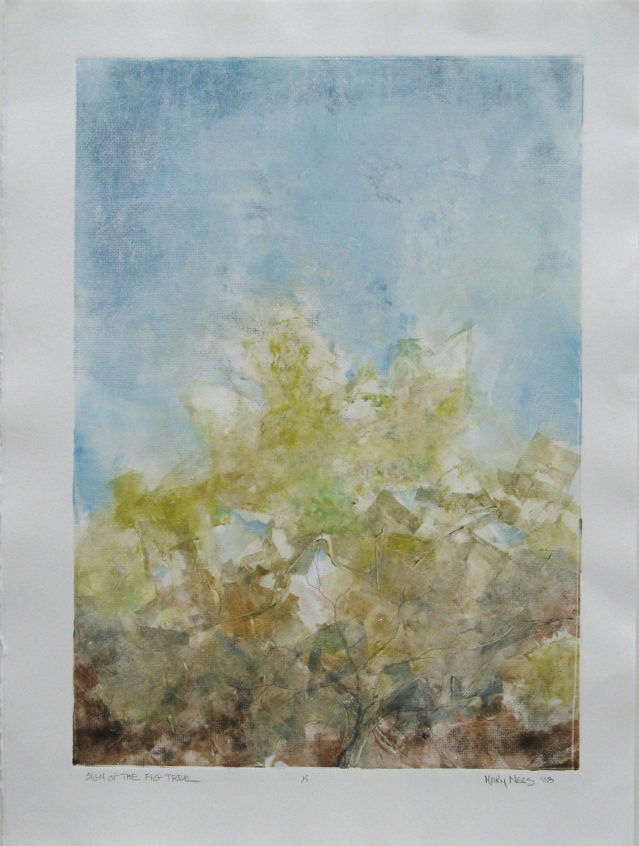
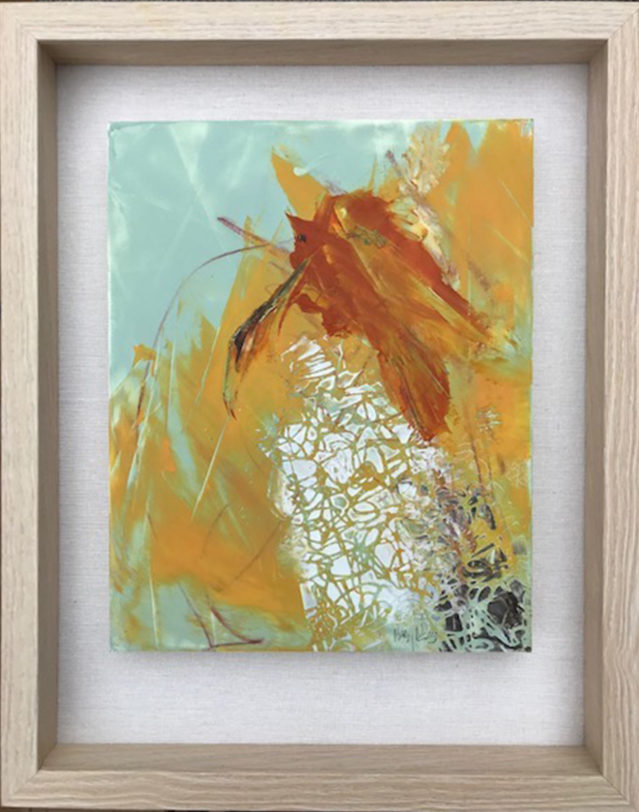
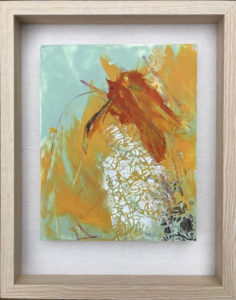 “Hope is the thing with feathers — that perches in the soul” Emily Dickinson, who penned this sweet line, knew a thing or three about meaningful hope. Hers was a buoyant expression, all the more poignant because she was equally aware of the hardness of her time/place and of her own internal struggle. Her poetry is rich for this reason: real, but outward even as she felt the confines of her tiny upper room.
“Hope is the thing with feathers — that perches in the soul” Emily Dickinson, who penned this sweet line, knew a thing or three about meaningful hope. Hers was a buoyant expression, all the more poignant because she was equally aware of the hardness of her time/place and of her own internal struggle. Her poetry is rich for this reason: real, but outward even as she felt the confines of her tiny upper room.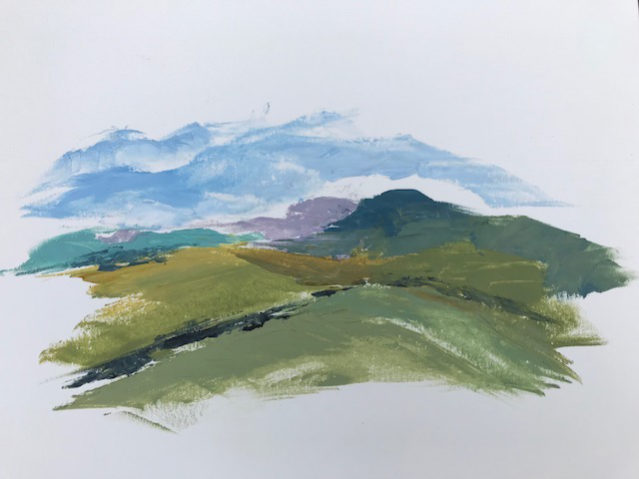
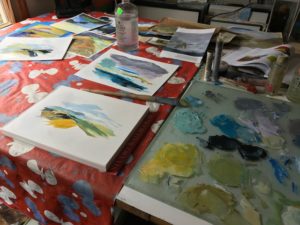 Yesterday in studio I worked up a palette of hues in oil, building from a photo I’d saved of an arctic scene in National Geo. You can see that here if you look closely at my messy table. I mixed up a set of replicated hues, pleasing together, and then added notes of my own with them, before I had any idea what I would do myself with this color grouping.
Yesterday in studio I worked up a palette of hues in oil, building from a photo I’d saved of an arctic scene in National Geo. You can see that here if you look closely at my messy table. I mixed up a set of replicated hues, pleasing together, and then added notes of my own with them, before I had any idea what I would do myself with this color grouping.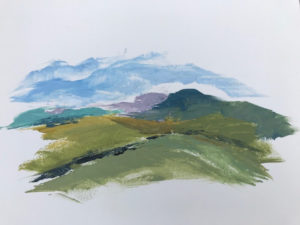
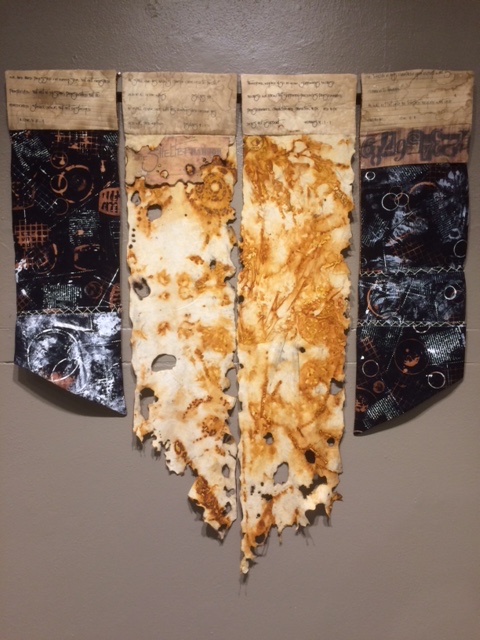
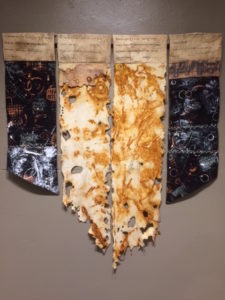
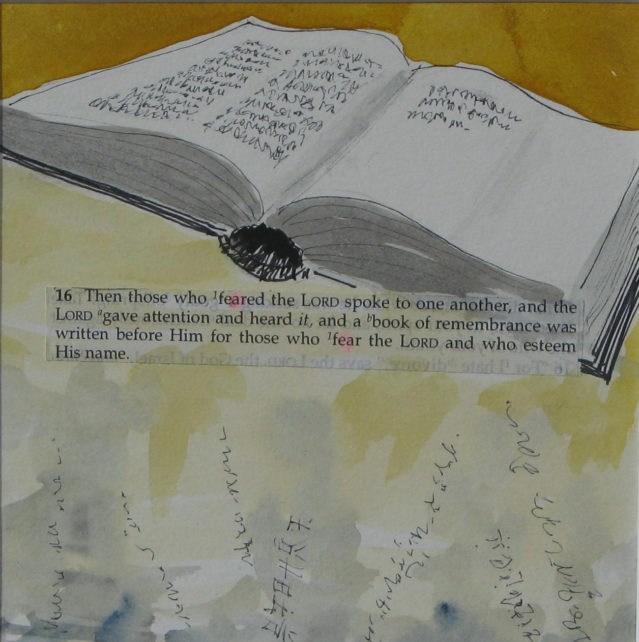
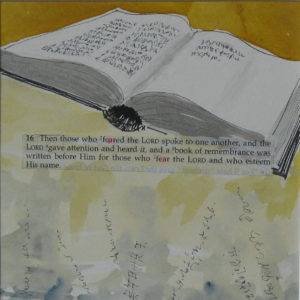 Another sketch from my
Another sketch from my 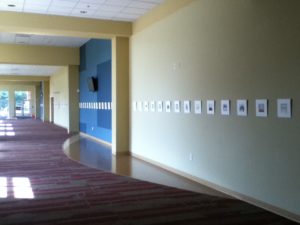
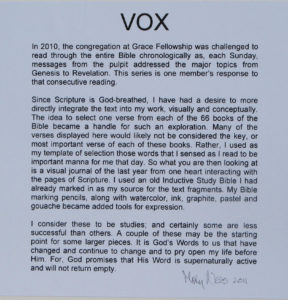
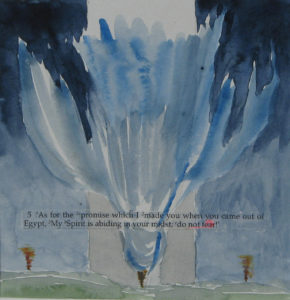
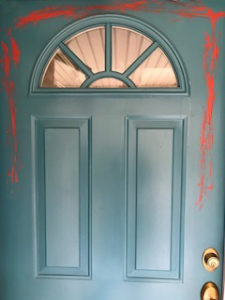 We’re preparing. And since visuals speak so powerfully to me, I painted a symbol on our front door. Similar to any other sign, one has to stop here and think. Strange things require some investigation to understand what’s really going on. People who know me already are primed for surprises. My engineer looked tentatively, bemused at the gleam in my eyes as to what I’d done now. One of my daughters just smiled at her weird mom. I got out some red paint, and researched which branches in my backyard would more closely resemble the hyssop used in Exodus. When the Israelites were told to paint blood on the lintel and posts of their doors right before their great rescue it must have been a truly weird act of faith. But the
We’re preparing. And since visuals speak so powerfully to me, I painted a symbol on our front door. Similar to any other sign, one has to stop here and think. Strange things require some investigation to understand what’s really going on. People who know me already are primed for surprises. My engineer looked tentatively, bemused at the gleam in my eyes as to what I’d done now. One of my daughters just smiled at her weird mom. I got out some red paint, and researched which branches in my backyard would more closely resemble the hyssop used in Exodus. When the Israelites were told to paint blood on the lintel and posts of their doors right before their great rescue it must have been a truly weird act of faith. But the 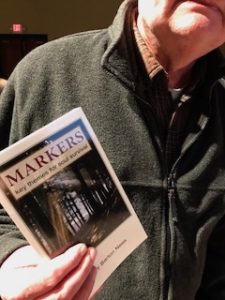
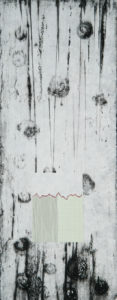 I showed them some pieces like this one, “Time and Mercy” where the chaos is falling down all around the inner life. But there on the inside is the mark of a heartbeat, and the recording of time. There’s a history that is undeniable, part of the fabric that cannot be changed. There’s a span ahead yet unknown. But in this present moment I can breathe and pause. This is the potential moment where beauty is born. For right now I can lift my head because the evidence of love is still shining through for those who are eager for it.
I showed them some pieces like this one, “Time and Mercy” where the chaos is falling down all around the inner life. But there on the inside is the mark of a heartbeat, and the recording of time. There’s a history that is undeniable, part of the fabric that cannot be changed. There’s a span ahead yet unknown. But in this present moment I can breathe and pause. This is the potential moment where beauty is born. For right now I can lift my head because the evidence of love is still shining through for those who are eager for it.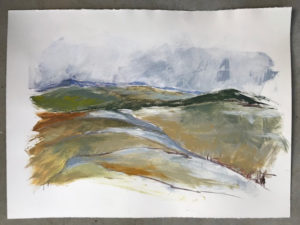 cam. It’s lived so slow from our angle. We move here on the ground at a snail’s response to what is happening second by second in the heavenlies. My sky here is active, for that’s where the real drama is being directed. The land only reflects the weather patterns and the light working above it. I live on the ground, held by gravity, where time creeps sometimes agonizingly slow. I don’t like that slowness, for there’s so much that needs to change down here, so much I long for from the only One who can bring us justice and peace. Humans and their leaders so disappoint me! He said He’d return, why is He taking so long!?
cam. It’s lived so slow from our angle. We move here on the ground at a snail’s response to what is happening second by second in the heavenlies. My sky here is active, for that’s where the real drama is being directed. The land only reflects the weather patterns and the light working above it. I live on the ground, held by gravity, where time creeps sometimes agonizingly slow. I don’t like that slowness, for there’s so much that needs to change down here, so much I long for from the only One who can bring us justice and peace. Humans and their leaders so disappoint me! He said He’d return, why is He taking so long!?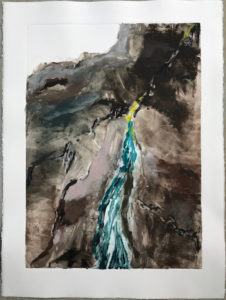
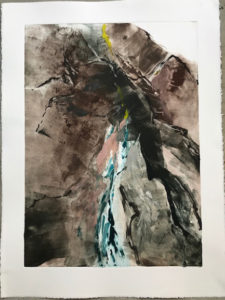 The journey of Moses leading the Hebrews out of slavery and into the land has informed some recent visual work. There’s a curious episode with water coming out of a rock that strangely happens twice:
The journey of Moses leading the Hebrews out of slavery and into the land has informed some recent visual work. There’s a curious episode with water coming out of a rock that strangely happens twice: 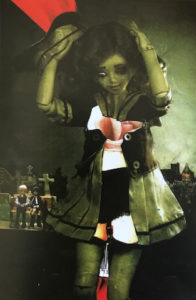 But then, I noticed a diminutive collage, chosen as a favorite by the museum staff, “Art to Stop Traffic: What Mercy Requires of Us”. The piece is only 5”x 3.5”. This submission is a poignant contrast, rendered from found images, paper, pen and pencil. The value and color contrast is immediately obvious, but peering closer one sees the uncomfortable juxtaposition of plastic expressions, skin color, garish lighting, things hidden and things exposed.
But then, I noticed a diminutive collage, chosen as a favorite by the museum staff, “Art to Stop Traffic: What Mercy Requires of Us”. The piece is only 5”x 3.5”. This submission is a poignant contrast, rendered from found images, paper, pen and pencil. The value and color contrast is immediately obvious, but peering closer one sees the uncomfortable juxtaposition of plastic expressions, skin color, garish lighting, things hidden and things exposed.